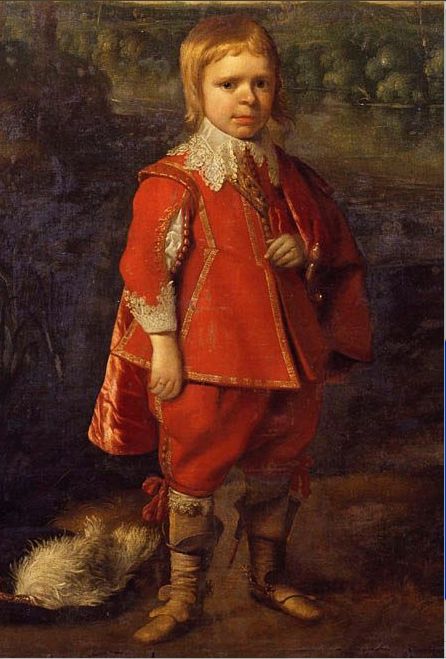
The adventure-filled life of Jeffrey Hudson. Here's the long and the short of it. (Okay, mostly the short.)
Jeffrey
Hudson was born, ironically, in the smallest county in England -Rutland
County- on June 14, 1619. His father worked as a butcher, a not very
well-paying position in those days. Mr. and Mrs. Hudson were both of
ordinary stature, as were all their other children, which included three
boys and a girl. A GROWING CONCERN
As Jeffrey grew older, though, he simply didn’t grow. At the age of seven, in fact, he stood a mere 18 inches tall. Jeffrey probably suffered from a condition common to dwarfs called hypopituitarism, a growth hormone deficiency in the pituitary gland. In every other respect, Jeffrey was quite normal; he was healthy, intelligent, and quite good-looking. He could have ended up spending most of his life as a sideshow in a local fair. But fate had something else in store.
FROM RAGS TO SILK BRITCHES
Everyone was curious about him, including the Duchess of Buckingham, whose husband was the best friend and principle advisor of King Charles I (1625-1649). At the request of the duchess, Jeffrey’s parents dressed their son in his best Sunday clothes (such as they were), marched him the mile or so up the hill to the duchess’s mansion, and handed him over. From then on, Jeffrey would be dressed in velvets, silks, and satins, with two servants to attend his every need. He would still be on display, the subject of laughter and curiosity- but there was a big difference between dancing for a duchess and performing in front of the local yokels at the county fair.
MOVE OVER, PILLSBURY DOUGHBOY!
In early November 1626, the duke threw a series of lavish banquets at his palatial home in London, including one for King Charles and his queen, Henrietta Maria. Only the finest food in the land was served, and all the guests were showered with gifts. Such fancy soirees called for culinary special effects: At the appointed hour, servants carried a huge, glistening pie to the royal table and set it down before the queen. Then, right on cue, a hand, then an arm, broke through the crust -followed by a small face peering out from beneath a shiny helmet. Finally, a tiny figure dressed in a miniature suit of armor emerged. It was Jeffrey Hudson.
THE QUEEN’S PET PROJECT
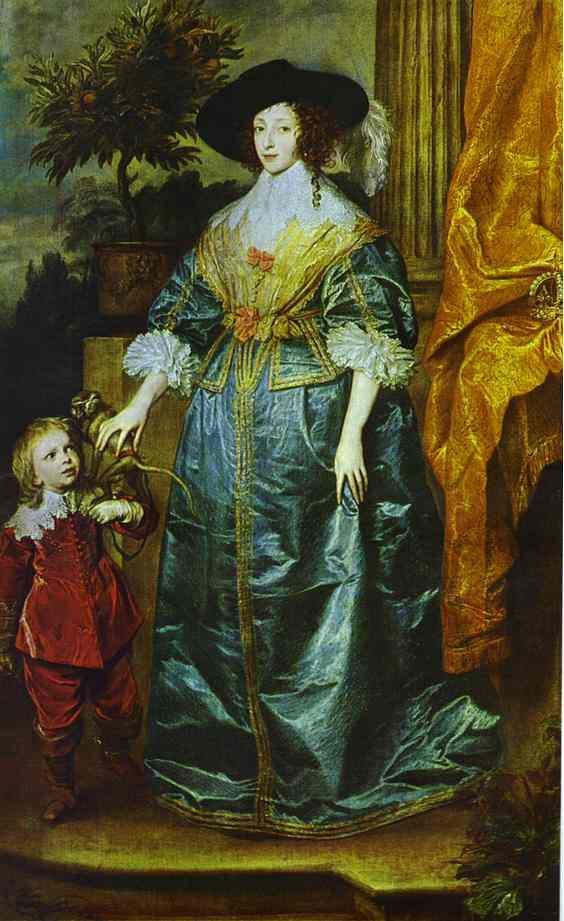
The queen took Jeffrey under her wing. The royal marriage wasn’t going very well; young Henrietta Maria -the sister of Louis XII, king of France- felt isolated and alone. And in a country that was largely Anglican, her passionate devotion to the Catholic faith only increased that sense of foreignness and isolation. So Henrietta Maria turned to her pets. To her menagerie of monkeys, dogs, and birds, she could now add her her own little pet human, Jeffrey Hudson, who thereafter was known as the Queen’s Dwarf.
FROM BAD TO NURSE
The queen had already lost one child shortly after childbirth; so when she became pregnant the second time, an expedition was mounted to find the finest nurse in all of France, Madame Peronne, to tend to the queen. Jeffrey had been included. So on March 18, 1630, he and Madame Peronne set sail from Calais. A few hours after leaving port, the ship was taken over by pirates. But after a few days, realizing that the group they’d snatched was probably too hot to handle, the pirates released their captives and sent them on their way.
A DECADE OF DECADENCE
The decade starting in 1631 was surely the happiest time of Hudson’s life. He was the hit of every social occasion; this was not just because of his curiosity value, but because of his wit, humor, and charm. He learned some new skills that were expected of young men at court, including shooting a pistol, riding, playing cards, and dancing. But while Jeffrey and his fellow courtiers were playing games inside the walls of the palace, some deadly serious games were being played outside of them. The Puritans in Parliament continued to grumble about the lavish spending of the monarchy and the high taxes that King Charles I continued to impose.
SEA-SICK AND TIRED
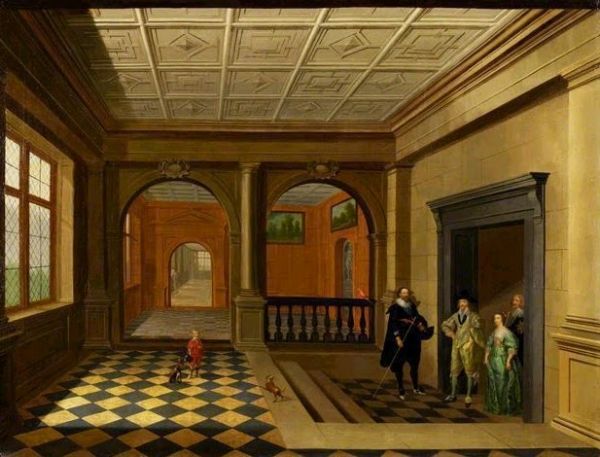
The ship ran smack into a huge storm, which the queen and her entourage barely managed to survive. They finally reached Holland on March 1, 1642. On the return trip -nearly a year later, in what was becoming a depressingly familiar routine for poor Jeffrey- a huge storm hit the queen’s convoy as soon as they lost sight of land. Several ships were lost in the storm, but the queen and Jeffrey managed to make it back to the Dutch coast.
NIGHTIE NIGHT
Back in Holland, the queen quickly raised more money and supplies, and she replaced the ships that had been lost in the storm. A year later, they sailed again for England, making it without a hitch. This time the trouble began after they landed, when the fishing village where they were staying overnight was bombarded by parliamentary ships. Dressed only in their nightgowns, the queen and her attendants were forced to flee their quarters. Meanwhile Jeffrey, armed with sword and pistol, joined the other male members of the queen’s household down by the landing area, ready to repel the queen’s enemies. At dawn, the tide carried the attacking ships out of range and the firing ceased.
NO HORSING AROUND
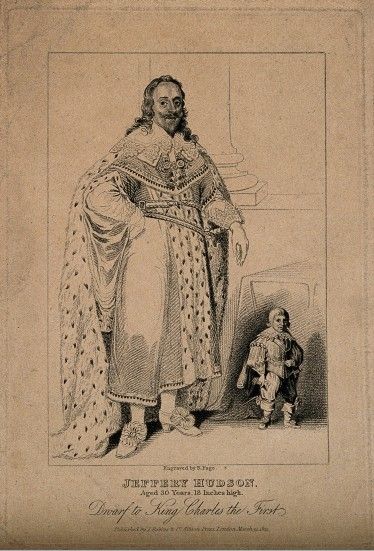
Henrietta Maria rewarded Jeffrey for his loyalty and bravery by conferring upon him the honorary title Captain of Horse. But by the summer of 1644, with the war against the parliamentary forces not going well at all, the queen and the royal entourage boarded a fleet of Dutch ships and hightailed it for France. Not surprisingly, they proceeded to run right into -yep, you guessed it!- another storm.
GO AHEAD, MAKE MY DAY
Henrietta Maria and company eventually made it to France. Once they had settled in they were joined by Williams Crofts, the queen’s Master of Horse, and several of the courts “young blades,” aristocratic hangers-on whose principle occupation was hanging around the local saloons and getting sloshed. Once again, Jeffrey found himself the easy butt of cruel jokes. The now 25-year-old Captain Hudson let it be known that the next person who insulted him would be challenged to a duel.
THE LITTLE SQUIRT
The final straw was an insult delivered by young Charles Crofts, brother of the aforementioned William. A duel was arranged, though, in all likelihood, no one -with the exception of Jeffrey Hudson- took it seriously. When the combatants were asked to choose their weapons, Crofts produced the 17th-century equivalent of a squirt gun (it was actually called a “squirt”), a large syringe that served in those days as a fire extinguisher. This apparently produced more than a few chuckles among the spectators. But in Jeffrey’s mind, the time for jokes was over. The water pistol was put aside. The two duelists, 100 paces apart, faced each other on horseback. The horses charged, and when they were only a few yards apart, Jeffrey Hudson leveled his pistol and shot Crofts through the head. He died at the scene.
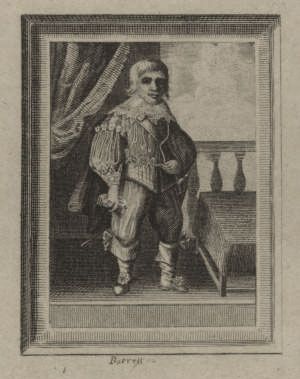 THIS LITTLE JEFFREY WENT TO MARKET
THIS LITTLE JEFFREY WENT TO MARKETThough it’s not clear exactly why, Jeffrey was banished from court (the queen may have been trying to protect Jeffrey, but there’s also the factor that dueling was in disfavor at that moment in France).
In October 1644, Hudson packed up his things and left France. By ship. (Oh no! Oh, yes.) Not long out of port, Jeffrey’s ship was boarded by Turkish corsairs, the dreaded Barbary pirates. Jeffrey was most likely taken to one of the slave-trade centers -Algiers, Tunis, or Tripoli- on the Barbary Coast, the group of North African states ruled by the Ottoman Turks. After their capture, slaves were taken down to a central market where they were put up for auction.
REACHING NEW HEIGHTS
Once a slave, it’s likely that Hudson received his fair share of physical abuse. Along with a new regime of physical labor, his diet underwent a radical change: from rich, refined foods to much simpler fare, which would have been something like black bread and vinegar. It may have been this combination of extreme changes in his daily existence that brought about the most remarkable of changes: Jeffrey actually began to grow! Right after reaching the age of 30, he shot up from around two feet in height to three feet and nine inches (a little more than one meter).
LUCKLESS IN LONDON
Beginning in the mid-1660s, England made concerted efforts to buy back its citizens from the Barbary pirates. After nearly 25 years in slavery, Jeffrey Hudson finally obtained his freedom. He returned home to live with his only surviving brother, Samuel. In 1678, after seven or eight years living the quiet life, he decided to return to London. But anti-Catholic riots had broken out there, and his close identification with the fervently Catholic Henrietta Maria made him an easy target for the mob. He was thrown in prison and clapped in irons, with nothing to sleep on but boards. No heat was provided duing the cold, damp English winters.
LARGER THAN LIFE
Jeffrey was released from prison in 1680, a tired and broken old man. His former connections at court helped him snag a little money from Henrietta Maria’s son, King Charles II, who must have taken pity on the Queen’s Dwarf. It is believed that Jeffrey died in the second half of 1681, but the exact date and place are unknown. There’s no record of his final days. But in all probability, Jeffrey Hudson, a proud and adventurous spirit, died impoverished and alone.

No comments:
Post a Comment